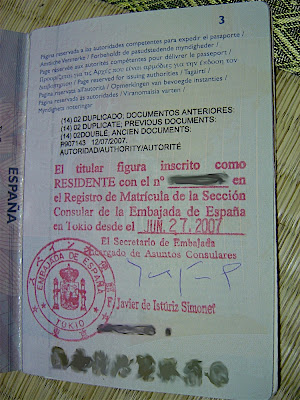¡Me he dado cuenta de que no he publicado casi nada de lo que pasó en la Tsuji Rave! Tengo bastantes fotos (de pepino también) pero el artículo de hoy lo dedico al bigotudo KAZ aka HIGE, que es nada más y nada menos que Famicom jockey, lo que significa que es como un DJ pero con máquinas Nintendo de 8 bits.
Tsuji Raveの写真を公開していなかった!いっぱいあるけど(ペピーノのライブ写真も)今日はKAZさんだけにする。KAZ aka HIGEはFamicom jockey。DJみたいだけど、レコードじゃなくてファミコンから音を出す。
I just realized I have posted next to nothing about Tsuji Rave! I have a lot of photos (pepino pics too) but today I’m showing you some pictures of KAZ aka HIGE, who is a Famicom jockey (a person who DJ’s with Nintendo Entertainment System consoles).
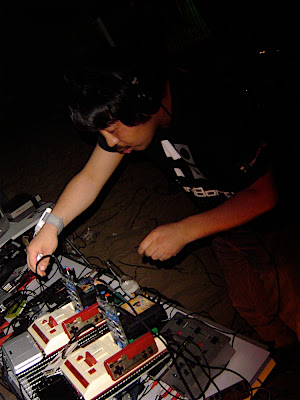
Una diferencia entre una sesión de KAZ y un concierto de pepino sería que él pone música de juegos o de otros compositores, mientras que la música en un concierto de pepino es toda nuestra (vale, hay versiones, pero son versión pepino). Ambas modalidades son divertidas, pero la música que pone KAZ la conocemos todos y baila todo el mundo. Hay que informarse bien, porque es difícil saber si una persona maquinitera va a hacer una cosa o la otra. La diferencia de instrumentos no es tan evidente como, por ejemplo, la diferencia entre unas guitarras y un par de platos de pinchar discos, lo que invita una vez más a leer los flyers con atención par disfrutar más de cualquier movida que haya.
KAZさんのセッションとペピーノのライブの違いは、 KAZさんは既存のゲームや他の人の音楽をならすってこと。ペピーノが演奏する音楽は全てペピーノ(カヴァーもありだけど、ペピーノバージョンになる)。どっちにも面白いところがあるけど、KAZさんが鳴らす曲はみんな知っているからかなりのりやすい。KAZさんとペピーノが使う機材はそんなに違わないので、こういうイベントで誰が何をするか気になる人は、イベントのフライヤーを読むこと。その方が何があっても楽しめる。
A difference between a pepino live show and a KAZ session is the fact that he plays music from games and other chiptune composers, while we play our own songs (or quite customized covers). This might sound like bashing KAZ, but he plays tunes that we all know and love, and I’m not the only one to appreciate that. The gear we use is quite similar, so it is harder to tell apart than a heavy metal act from a dj event. Just read the flyer whenever you care about what a person will be exactly doing at an event, you’ll often enjoy more if you know what is happening.
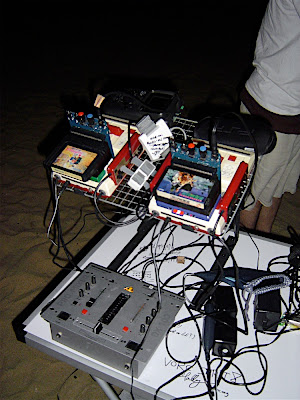
Su equipo contaba principalmente con dos Famicom en las que ponía varios cartuchos a la vez, y una mesa de mezclas de DJ. A veces se oía su varonil voz a través del micrófono que tiene el segundo mando de la Famicom.
KAZさんが主に使った機材は複数のカセットが入ったファミコン2台と、DJミキサー。たまにはファミコンの2コントローラのマイクからKAZさんの男らしい声が流れていた。
KAZ’s gear was mainly two Famicoms (Japanese NES) with multiple cartridges loaded each, and a DJ mixer. Sometimes we’d hear his manly voice through the microphone embedded into the Famicom’s controller II.
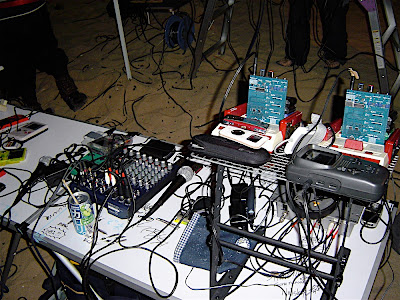
También disponía de algunas maquinitas más actuales como Game Boy micro, Nintendo DS o PSP, que principalmente usaba para emular el sonido de otras máquinas antiguas, como por ejemplo Famicom Disk System.
より新しい機械もあったけど(ゲームボーイミクロ、ニンテンドーDS、PSPなど)KAZさんが古いハードのエミュレーションに使っていた。例えばファミコンディスクシステム。
He also had some newer handhelds like Game Boy micro, Nintendo DS or PSP, which he used mainly to emulate older systems like the Famicom Disk System.
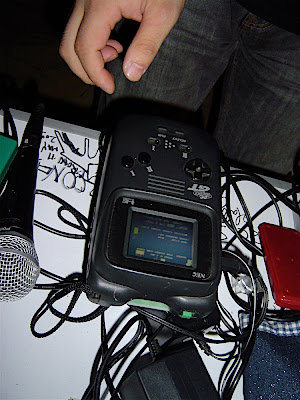
Y esta es su TurboExpress o PC Engine GT, en la que por primera vez vi funcionando un programa casero tocando música. KAZ era la sesión que más ganas tenía yo de presenciar esa noche. Muchas veces ha venido a ver eventos en los que tocábamos nosotros (incluso fue al Blip Festival en Nueva York) pero esta fue la primera vez que lo vimos nosotros, y a los dos nos gustó mucho. ¡100% recomendado!
これはKAZさんのPCエンジンGT。初めてこの機種で音を出す自作ソフトの実行を見ることが出来た。KAZさんはあの夜一番楽しみにしていたセッション。何回もペピーノが参加したイベントを見に来てくれたのに(ニューヨークでのBlip Festivalにも行った!)、Tsuji RaveまでKAZさんのセッションを見ることが出来なかった。愛も僕も楽しかった、絶対おすすめ!
And this is his TurboExpress or PC Engine GT, on which I first saw homebrew music soft running. KAZ was the number I was anticipating most that night, and the two of us enjoyed it a lot. KAZ has been coming to many events pepino took part of, but we hadn’t been able to see him playing live until Tsuji Rave. He even went to New York for the Blip Festival!


